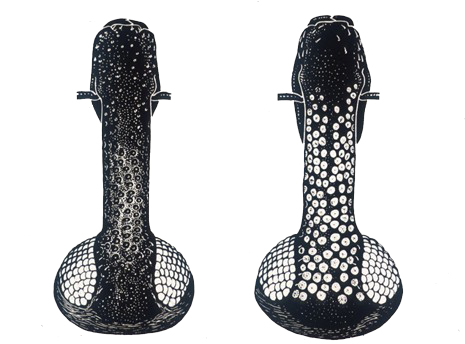The Importance of Voucher Specimens
Voucher specimens are those that have been examined by a specialist, determined as a certain taxon and labelled accordingly. The full scientific name with author should always be placed on a label for voucher specimens. For biological control workers, it is desirable to provide a specialist with a good series of specimens (so that they will recognise a mixture if collected), to ensure that they are all individually properly labelled and that they have a reference number attached to each specimen. A mixture of sexes should be provided when available and the specialist asked to return labelled representatives (if sufficient are available) so that they can be used for further reference.
The biological control worker can then make provisional identifications based on a comparison of specimens with voucher specimens. However, these determinations should never be regarded as authoritative without further reference to a specialist. A most useful guide can be found in Dahms
et al. (1994).

The salvinia weevils Cyrtobagous salviniae (left)
and
Cyrtobagous singularis (right) can be identified from each
other by differences in the rostrum.
Voucher specimens should be retained from:
 | original consignments (even if damaged), |
 | representatives of a species first released in the field, and |
 | specimens recovered after establishment is confirmed. |
Whenever possible, voucher specimens of exotic taxa proposed for import should be lodged with an approved institution, prior to an application for a permit to import.
The Identification Register
Maintaining the identification register forms an essential part of all biological control projects. It provides a record for all arthropod specimens submitted to taxonomists or organisations when identification is needed or requires confirmation. A registration number should be entered in the register corresponding with a number attached to every specimen (or enclosed with specimens if held in containers of preservative).
Methods for Labelling Insect Specimens
Labels should be attached to the pin holding a dried specimen and written with water proof ink unless printed by an acceptable method. For specimens held in liquid preservative the label should be placed in the same tube with the specimen. Labels written in ink are prone to dissolve in liquid preservatives. It is better to use pencil.
Information on the label should include:
 | Essential
 | Locality (Country, State and site names), |
 | date, |
 | collector.
|
|
 | Desirable
 | Latitude and longitude, |
 | altitude, |
 | host (if confirmed) plant, |
 | habitat, |
 | substrate. |
|
[ Back ] [ Next ]
Don Sands |

